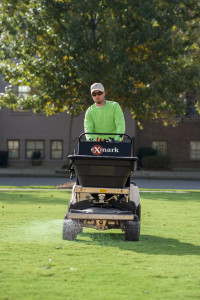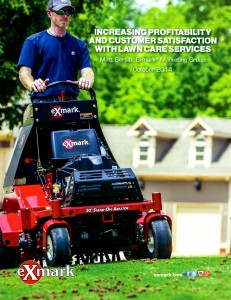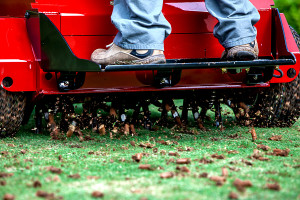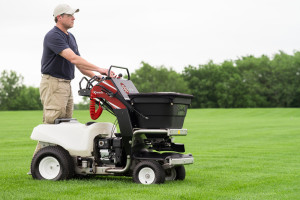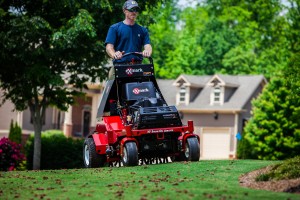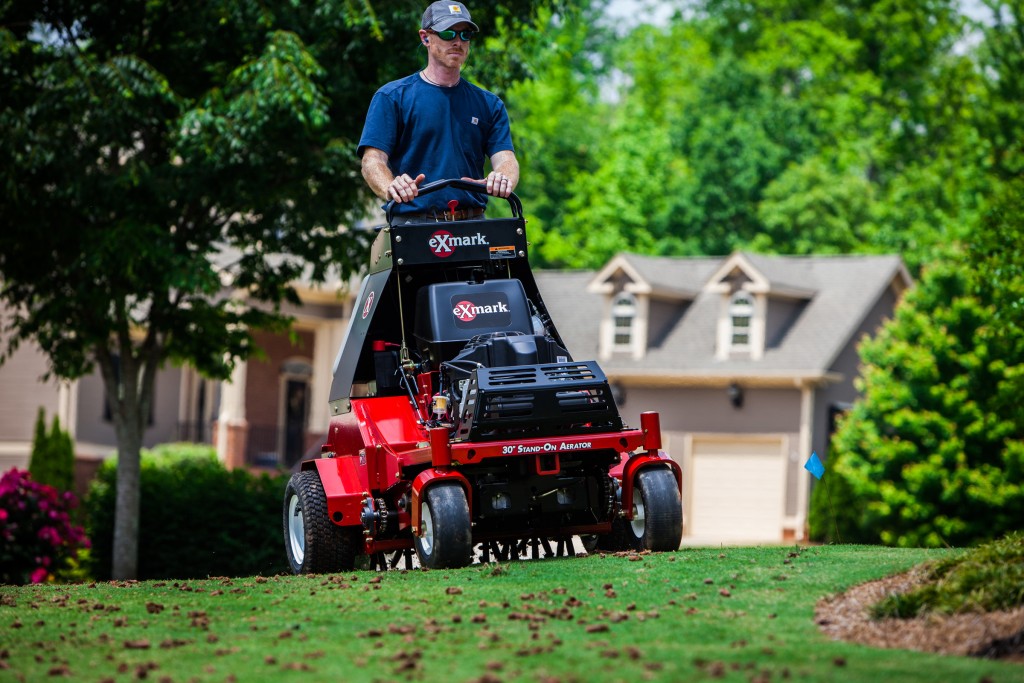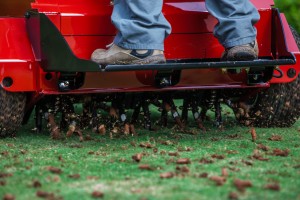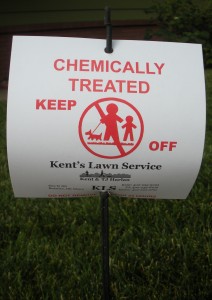If you’re a professional landscaper or mower who offers aeration services, you probably have a two-step process, especially in the spring. First you aerate, then you use a spreader to overseed. This means two passes with two pieces of equipment, increasing your time on site, to say nothing of labor, fuel and operational costs. With Exmark’s new spreader attachment for the 24-inch and 30-inch Stand-on Aerators, it’s now possible to aerate and overseed in one pass. By combining two operations into one, operators can reduce costs and improve profitability.
The spreader attachment is simple to install, and can be removed quickly without tools, making it easy to handle on the job site. With a hopper capacity of 80 pounds of seed and speeds up to 7 mph, the Stand-on Aerator with spreader attachment will make short work of even the largest jobs, like playing fields, parks and cemeteries. For residential use, a hopper cover is standard, so seeds stay dry and contained during transportation or between uses.
Like all Exmark equipment, the spreader attachment features easy, intuitive controls that are easy to access. Operators can activate seed spinners or adjust spinner speed to increase broadcast width, as well as open and adjust the seed gate, on the fly, further increasing productivity. A manual blocker door provides increased operator control around flower beds, sidewalks, patios, or adjacent areas that don’t need overseeding.
Commercial mowing operations that add turf maintenance to their mowing services can see revenue and profits grow, and they position themselves to be more competitive in a crowded and competitive industry. By combining aeration and overseeding into one pass, they further increase the profitability of these services while reducing overall man-hours and equipment costs.
For a demo of the Exmark Stand-on Aerator and spreader attachment, contact your local Exmark dealer.

